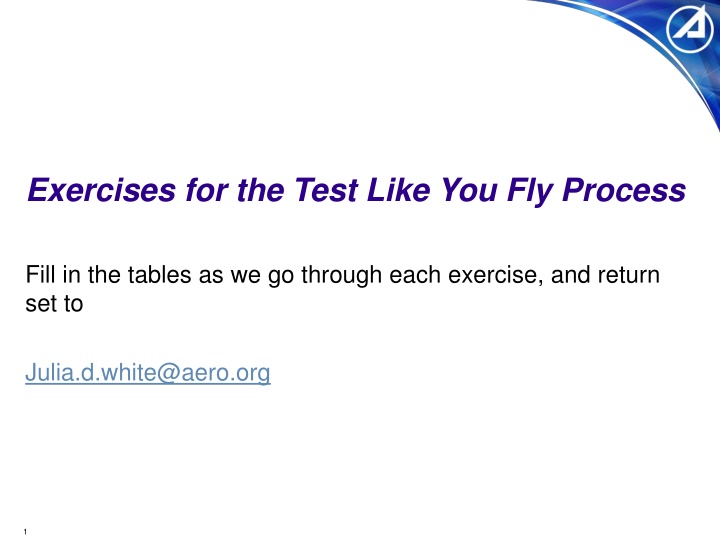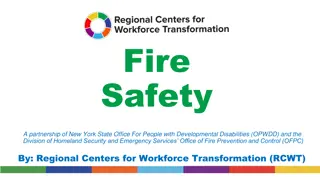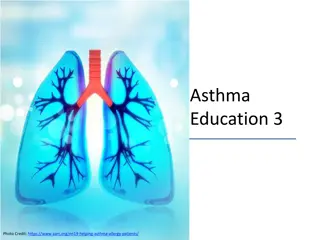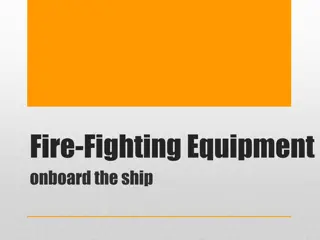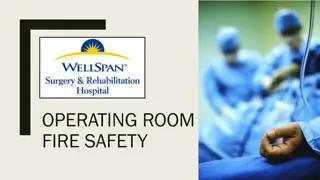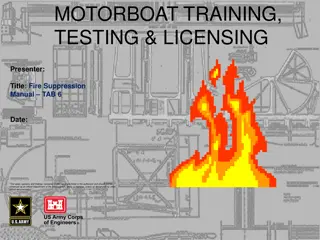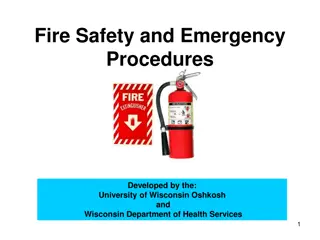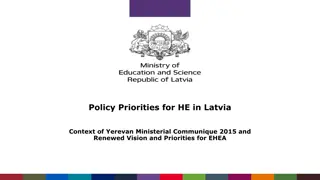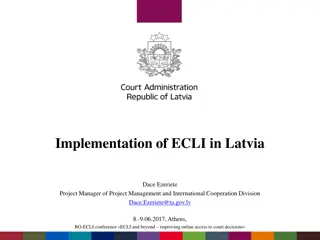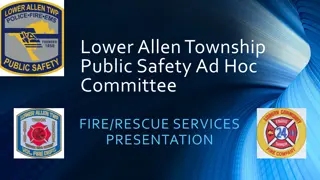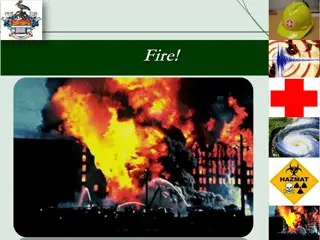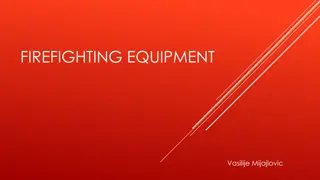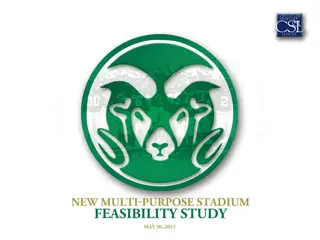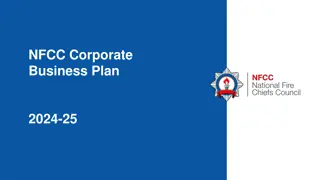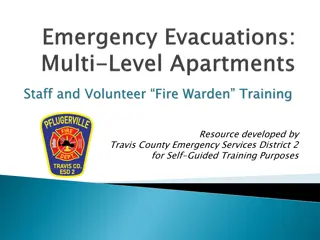Feasibility Studies for State Fire and Rescue Service of Latvia
This project involves three independent feasibility studies aimed at enhancing the capacity and practices of the State Fire and Rescue Service of Latvia. The studies focus on promoting clean and energy-efficient road transport vehicles, establishing mobile security classes, and creating an education training complex. Through research and implementation, the goal is to improve technical conditions, preventive measures, and public safety within the SFRS.
Download Presentation

Please find below an Image/Link to download the presentation.
The content on the website is provided AS IS for your information and personal use only. It may not be sold, licensed, or shared on other websites without obtaining consent from the author.If you encounter any issues during the download, it is possible that the publisher has removed the file from their server.
You are allowed to download the files provided on this website for personal or commercial use, subject to the condition that they are used lawfully. All files are the property of their respective owners.
The content on the website is provided AS IS for your information and personal use only. It may not be sold, licensed, or shared on other websites without obtaining consent from the author.
E N D
Presentation Transcript
Exercises for the Test Like You Fly Process Fill in the tables as we go through each exercise, and return set to Julia.d.white@aero.org 1
Mission & System Characterization Exercise #1: What s this all about? 2
Characterizing the Mission Fill in at least one row Primary mission success criteria: Mission phase success criteria: Mission Phase Mission Critical Event Mission Phase Objective End-to-End Configuration Critical Mission Contributors Fill out your understanding of the primary mission success criteria for HLS. Identify one or more mission phases. Fill in the mission phase success criteria. Fill out table items for at least one phase. Exercise Feel free to collaborate offline. 3
Search and Rescue (SAR) Exercises We will try exercises as breakout group teams If that is problematic, we will revert to having you do a solo effort Pick your role Systems Engineer Chief Tester Other Pick your organization (something close to your real world organization) State SAR Office SAR satellite contractor SAR user equipment contractor / manufacturer Communications equipment contractor Mission control center contractor Search equipment (helicopter, aircraft, or rescue boat contractor) Rescue equipment contractor Other (specify on the exercise forms) 4
Search & Rescue High Level Operational View Image from NOAA.gov 5
Critical Events and Mission Contributors Critical Events - can consist of any of the following types of events that are necessary for a successful mission: first time events, critical reoccurring events (i.e., daily nominal operations), and critical situations (i.e., transitions between events). Critical Mission Contributors - All items (hardware and software) and conditions (initial conditions, dependencies/pre-requisites, sequence, timing, interactions) that have failure consequences leading to end of mission or severe mission degradation 6
Search & Rescue Mission & System Mission Objective: Rescue people in distress in a timely manner System Elements Mission Phases Notify (HELP!!!) Using the Operational View, identify the system elements associated with each mission phase: Detect Respond (Let appropriate organizations know) PHASE ___________________ SYSTEM ELEMENTS 1. _____________ 2. _____________ 3. _____________ 4. _____________ Search Rescue (THANK YOU!) Exercise 7
Search & Rescue Mission & System What are Critical Events and Contributors? Mission Contributors per mission phase Example: Mission Phase DETECT # of concurrent distress signals Space weather event Health of on-board receiver Critical Events per mission phase Example: Mission Phase DETECT Receipt of User distress signal on satellite Transmission of distress signal information to USMCC Notify (HELP!!!) Detect Respond Communicate Search Rescue Users (Hikers, Boaters, Off Roaders, Rafters) Communication Assets Detection Assets Responder Assets System Elements Mission Phases 8
Characterizing the Mission Fill in at least one row Primary mission success criteria: Mission phase success criteria: Mission Phase Mission Critical Event Mission Phase Objective End-to-End Configuration Critical Mission Contributors Exercise 9
Mission Critical Fault Analysis Exercise #2: What could possibly go hideously wrong? R.I.P. 10
First-Time and Mission-Critical Events Exercise: Mission Failure & What Can Go Wrong Mission Failure: People not rescued in time Not found Found, but died before rescue What Can Go Wrong? Brainstorm items What are Some Critical Mission Characteristics? Weather New State MCC software Communication equipment What else? How? New State MCC identification not in LUT database Signal timing mismatch What else? SAR Timeline Timeline Critical Event Readiness Baseline Validation of State SAR Readiness T + 0 Person in distress activates beacon T + a few seconds Satellite receives and transmits distress to LUTs T + 2 minutes LUT makes position calculation and transmits to an MCC T + 5 min MCC identifies and contacts appropriate search and rescue POCs Phase transition T + ?? SAR resource personnel determine initial response T + ??? Search resources deployed; rescue resources arranged T + ???? SAR response agencies caucus to determine if additional resources needed Exercise 11
Pre-Mortem: Mission Failures The bad news Mission Failure Mission Phase Notes We will have a 3-minute timed self-brainstorming session Write down as many mission failures as you can in the time allotted Keep it at the mission level, including mission phase transitions Mission failures can reflect failures of the segment you identify with We ll use some of the results from this in later process steps Exercise 12
Mapping Mission to Test Exercise #3: Let s do this! 13
Process to Assist with Identifying Candidate Tests Examine mission architecture, CONOPS, timelines Look at notional mission phases Identify phase transitions, sequences, handoffs, concurrent activities What mission-critical and first-time events are included? How much of each mission phase has been/will be tested? Are there any critical events that need to be tested in an operationally realistic manner under several conditions or scenarios? Seasonal? Process testing? Testing for time? What mission events / activities should your list of candidate LYF tests include? What critical mission characteristics would you want present in a LYF test? Exercise Keep the focus on mission execution 14
Candidate Operationally Realistic Tests Candidate Test Mission Objective Test Objective ~ Test Duration Key Characteristics LYF Test Exceptions Using one of the techniques identified in previous material, identify at least one candidate test and as many attributes as possible in the table. Exercise These will be used later in the process 15
Testability Assessment for Candidate LYF Tests Evaluate previously identified candidate tests Testability Operationally Realistic LYF Test Options Test ID Test Resource Feasible? Aspect of Mission Validated Practical? Perceptive? Value Added? Do a testability analysis on at least one candidate test and note as many evaluations as possible in the table. Exercise 16
Fault Informed Risk Management Exercise #4: We can t do that, so what will we miss? 17
Whats the Risk? Tests not done Week in the life end-to-end test Key characteristics not included in test Weather Altitude Only 10% of counties participating Likely flaw path to mission failure Poor shift handovers in new MCC Throughput issues in new MCC on bad day in the life 18
Fault Informed Risk Management Candidate Test Mission Objective Test Objective ~ Test Duration Key Characteristics LYF Test Exceptions Identify at least one candidate test and as many attributes as possible in the table. You may use one candidate test identified before. Objective of exercise is to identify a likely test exception, up to and including not running the test. Exercise 19
Architecting an Operationally Realistic Test Exercise #5: Who, what, where, when and HOW? 20
Instructions for Exercise: Architecting a LYF Test Pick a test identified in previous exercise to explore its architectural aspects Discuss this with your breakout team to fill out as many items on the following table as possible Exercise Keep the focus on mission execution 21
Architecting Operationally Realistic Tests Allocated Test Who should participate What resources should be used Where should each what reside When must each item be available How can this test event happen Allocated Test Who has what role and responsibil ity What portion of the mission timeline should be included How long should the test be Exercise Pick a previously evaluated test and identify architectural elements 22
Mission Characteristic Classes for Search & Rescue Which of these apply to SAR? End-to-end (integration or hierarchy) level Configuration Time & Timeline Uplink (commands) Downlink (state of health, mission data) Environments (internal, ascent, space, ground) ______________________ Mission Planning & Operations Products/Outputs/Services Others? ______________________ ______________________ ______________________ 23
Sample: High-Level LYF Test Exceptions Allocated Test Critical LYF Test Objective Mission Characteristics LYF Test Exception Event Identify any new LYF test exceptions that occur to you as a result of architecting the test. Exercise 24
